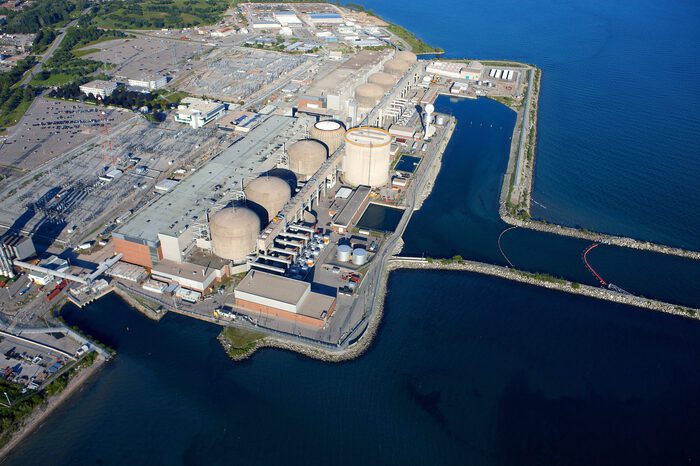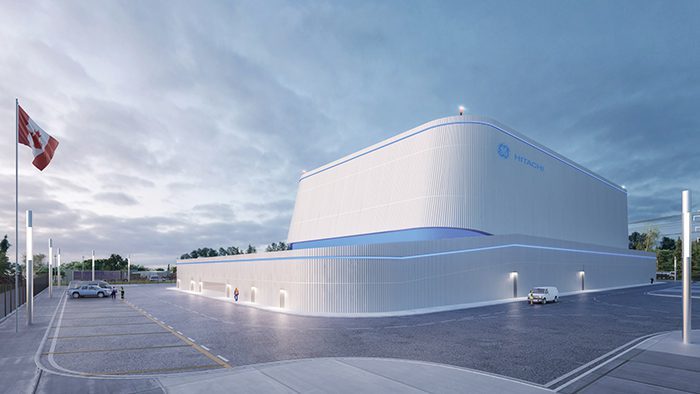Canada’s OPG and Czech Republic’s ČEZ Partner to Advance SMR and Other Nuclear Technology
Ontario Power Generation (OPG) and Czech Republic-based ČEZ are collaborating to advance deployment of nuclear technology, including small modular reactors (SMRs). The companies said they signed a memorandum of understanding (MOU) on Oct. 11, with an aim to “reduce financial, technical and schedule risk to both parties on their respective future projects.”
OPG is Ontario’s largest electricity generator. The company has 75 generating stations in the province with a combined capacity of more than 18 GW. In addition to 66 hydroelectric facilities, its fleet includes two nuclear stations—the 3.5-GW Darlington facility and the 3.1-GW Pickering station (Figure 1). OPG says nuclear power provides about 60% of Ontario’s power today.

“Ontario Power Generation is a world-class nuclear operator, with decades of experience in providing safe, clean, reliable nuclear power,” OPG President and CEO Ken Hartwick said in a statement. “Working together with entities like ČEZ, we can leverage our combined experience to develop and build the new technology needed to power the future and meet decarbonization goals.”
ČEZ is one of Europe’s largest energy companies. Both OPG and ČEZ have committed to achieving net zero goals by 2040, and they believe advanced reactor technology can help in that mission.
Darlington SMR
Under the MOU, OPG and ČEZ will share information related to the deployment of new nuclear projects. OPG has said new nuclear generation, including SMRs, is “an essential part of the electricity mix needed to decarbonize the energy sector and broader economy.” OPG is in the process of deploying an SMR at its Darlington site and has already received approval of an Environmental Assessment.
In December 2021, OPG said it would work with GE Hitachi Nuclear Energy on the Darlington SMR project. GE Hitachi’s BWRX-300 (Figure 2) is a 300-MWe water-cooled, natural circulation SMR with passive safety systems. It is the 10th evolution of GE’s boiling water reactor (BWR). The company says the BWRX-300 represents the simplest and most innovative BWR design since it began developing nuclear reactors in 1955.

On March 10 this year, OPG announced it had awarded a $32 million contract to E.S. Fox Limited for the first phase of site preparation and support infrastructure for the Darlington SMR project. Among the infrastructure work expected to be completed under the contract is bringing water, electrical power, information technology, and roads to the site. The Darlington SMR is expected to be operational by the end of this decade.
ČEZ’s Nuclear Fleet
ČEZ is no stranger to nuclear power either. It currently operates two nuclear power plants (NPPs) in the Czech Republic. The four-unit Dukovany site (Figure 3) was the first NPP built on Czech territory, and, according to the company, it is “one of the largest, most reliable, and economically advantageous energy sources” in ČEZ’s fleet. Dukovany is located 30 kilometers (km) southeast of Třebíč. It produces about 20% of the total electricity consumption in the Czech Republic.

The Dukovany plant has four VVER 440 model V 213 pressurized water reactors (PWRs). The individual units were put into operation between 1985 and 1987. The original total installed electrical capacity was 1,760 MW, but output has been gradually increased through turbine upgrades, efficiency programs, and technical improvements. Today, the power plant has an installed capacity of 2,040 MW.
ČEZ also operates the dual-unit Temelin NPP, which is situated about 24 km from the South Bohemian capital České Budějovice. Temelin has two VVER 1000 Type V 320 PWRs. The units entered operation in 2000 and 2003, respectively. The station generates roughly the same electricity annually as the Dukovany plant.
A Partnership with Potential
Like OPG, ČEZ has taken first steps toward expanding its nuclear fleet at both Temelin and Dukovany. “As a company, we are focused on developing new energy solutions and technologies,” Tomáš Pleskac, member of the Board of Directors and chief of the New Energy Division with ČEZ, said in a statement. “We are preparing for the construction of a new nuclear unit in Dukovany and the upcoming allocation of space at Temelín, where the first SMR could be built in the first half of the next decade. The collaboration with OPG is therefore, for us, a logical step forward.”
“Ontario is proud to lead the way on clean nuclear technologies,” Ontario’s Energy Minister Todd Smith, said in a statement. “With our robust nuclear supply chain and talented workforce, we are ready to support the global deployment of our nuclear expertise that will help reduce emissions while delivering energy security to the world.”
—Aaron Larson is POWER’s executive editor (@AaronL_Power, @POWERmagazine).